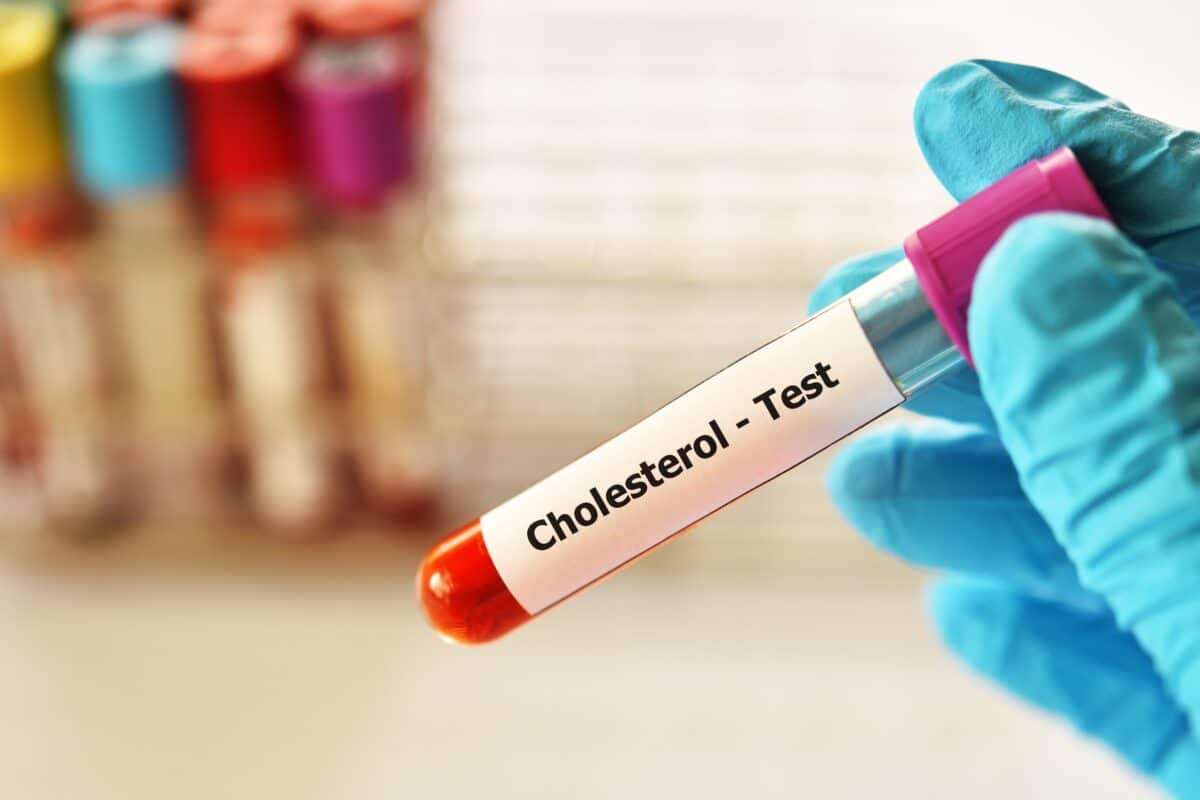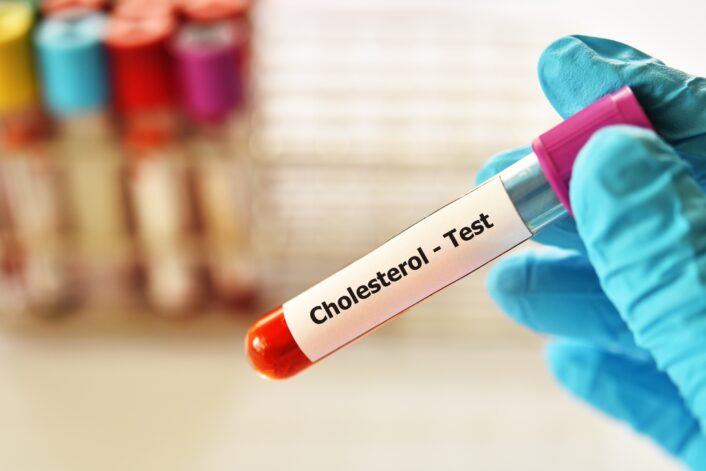Disclaimer: This article is for informational purposes only and is not intended to diagnose any conditions. LifeDNA does not provide diagnostic services for any conditions mentioned in this or any other article.
Overview
Plant-based eating is growing fast, with more people turning to it for its health benefits, ethical reasons, and positive environmental impact. The vegan food market is expected to jump from $27.71 billion in 2024 to $31.32 billion in 2025and will keep rising to over $47.82 billion by 2029, with Asia-Pacific leading the way. This growth shows that many people are opting into plant-based diets mainly because of their significant health benefits.
As more people embrace a vegan lifestyle, many feel energized and gain its benefits, while others face challenges such as low energy or nutrient imbalances. The question… What makes the difference? The answer may lie in your genes.
The role of genetics in diet and aging cannot be overstated. Everyone’s genetic makeup influences how their body responds to various nutrients and how they age over time. This means that while a vegan diet may offer significant health benefits for some, it may not be ideal for everyone. For example, some people may have genetic variations that make it harder for them to absorb certain nutrients, such as vitamin B12, which is important for nerve health and is mostly found in animal products. Other individuals may have a genetic advantage in processing plant-based proteins more efficiently. It is important to understand the specific genetic factors that may contribute to how your body will respond to a strictly plant-based diet and if such a diet plan aligns with achieving your health needs and goals.
What is a Vegan Diet?
A vegan diet means cutting out all animal products, such as meat, dairy, eggs, and anything animal-sourced. Unlike vegetarianism, which allows dairy and eggs, veganism is more restrictive. The focus is entirely on plant-based foods, including fruits, vegetables, grains, legumes, nuts, and seeds. Some vegans also avoid processed foods containing animal-derived ingredients like gelatin, which is made from hydrolyzed animal bones, or rennet, an enzyme traditionally sourced from animals used in cheese production.
How Genetics Could Affect Your Response to Vegan Diet
Everyone’s body is unique due to differences in genetic makeup, which also affects our body’s response to or how we process food. Here’s how your genes may impact your success on a vegan diet:
- Nutrient Absorption: Some people’s bodies have a harder time absorbing certain nutrients from plant foods. For example, vitamin B12 or cobalamin, which is needed for energy and nerve health, is mainly found in animal products like meat, eggs, and dairy. If your body doesn’t absorb vitamin B12 well, you might need to take supplements or eat foods that have B12 added to them, such as fortified foods, when following a vegan diet.
- Metabolism: Metabolism is how your body converts food into energy, and your genes play a role in how well you process food macronutrients such as protein, fats, and carbohydrates. Some people may burn fat more easily, while others need more carbs to stay energized. This means certain types of vegan diets, whether higher in healthy fats, protein or carbohydrates,, may work better for some, depending on an individual’s metabolic response
- Protein Needs: Protein is essential to help build and repair muscles. Although mainly present in animal sources, it can also be obtained from plant-sourced items like beans, lentils, and tofu. However, some people’s genetic attributes could influence the protein absorption rate and how it is utilized efficiently by the body. If that is the case, you may need to consume more protein to help you meet your needs, especially if you’re more active or exercise regularly.
Personalizing the Vegan Diet Based on Your Genetics
Understanding the role of genetics may help you figure out exactly how your body might respond to a vegan diet and enable making necessary adjustments, if needed, to suit your needs.
- Understanding Nutrient Needs: Genetic analysis can tell if you are more likely to be deficient in certain vitamins and minerals, like B12 or iron. These nutrients can be more difficult to obtain on a vegan diet, so having an understanding of your genetic risks may guide you in taking the right supplements and choosing the right diet plan that will work best for you.
- Metabolism and Macronutrients: Protein, fat, and carbohydrates give your body energy, but your genetics may also have an effect on the magnitude of macronutrient breakdown that your body needs. Some people need more protein from foods like beans and tofu, while others do better with healthy fats from avocados and nuts. Knowing your genetics can help you choose the best balance and food combination for your vegan diet.
- Tracking Epigenetic Changes: You can also track how a vegan diet is affecting your epigenetic status, including your epigenetic age, meaning how fast or slow your body is aging, by doing special tests. If your epigenetic markers improve, that’s a sign your diet is working well for your body. This may help you understand the long-term benefits of a vegan diet for your health.
Types of Vegan Diet
Vegan diets can be adapted to different needs, such as increasing protein intake, managing blood sugar, or avoiding overly processed foods. Many people choose a specific type to support their health. Here are some common options:
The vegan keto diet is low in carbs, high in fats, and moderate in protein, cutting out grains, starchy vegetables, and sugary fruits. It focuses on high-fat plant foods like avocados, nuts, and coconut oils. Some people find this diet to help with short-term weight loss, but it can be very restrictive and may lead to nutrient deficiencies if followed long-term. It is important to carefully plan meals or work with a dietician to ensure you get all the necessary nutrients.
This diet focuses on controlling blood sugar levels by eating high-fiber items, like whole grains, legumes, and plant-based proteins (such as tofu and tempeh). Healthy fats from avocados and nuts are also included to help stabilize blood sugar. This diet is helpful for people with diabetes or anyone looking to manage their blood sugar levels.
A high-protein vegan diet centers around plant-based protein sources such as beans, tofu, and quinoa. Vegan protein powders made from peas or soy may also be included. This diet is ideal for athletes or bodybuilders who need more protein to support muscle growth and recovery.
The Mediterranean vegan diet follows the traditional Mediterranean eating style but excludes animal products. It’s rich in fruits, vegetables, whole grains, legumes, and olive oil, and is well-known for its heart-healthy benefits. This diet is safe for most people as long as it is nutritionally balanced.
What Foods Make Up a Vegan Diet?
A well-rounded vegan diet is rich in fruits, vegetables, legumes, whole grains, nuts, seeds, and plant-based oils. Here are the main categories of foods commonly included in this specific diet:
Fruits and vegetables are the backbone of any vegan diet. These plant-based foods are packed with essential vitamins, minerals, and antioxidants that support overall health. For example, berries and citrus fruits are high in vitamin C, which boosts immunity. Leafy greens like spinach and kale are rich in iron, calcium, and magnesium, which are key nutrients for bone health and energy levels.
Fruits and vegetables are also excellent sources of fiber which helps with digestion, regulates blood sugar levels, and contributes to heart health. Including a wide variety of fruits and vegetables in your diet is essential for long-term health.
Whole grains like brown rice, quinoa, oats, and barley are essential in a vegan diet as a source of fiber, vitamins, and minerals. For example, quinoa is not only rich in fiber but also a complete protein source, containing all nine essential amino acids, making it a great choice for those looking to ensure they meet their protein needs even without any animal-sourced items. Whole grains also provide complex carbohydrates, which provide steady energy throughout the day. They also help stabilize blood sugar and support healthy digestion due to their fiber content.
Legumes like beans, lentils, chickpeas, and peas provide plant-based protein, fiber, and iron. Lentils are a fantastic source of protein and iron, essential nutrients for energy and muscle function. Beans, such as black beans or kidney beans, are rich in fiber, which helps manage blood sugar levels and supports gut health.
Nuts and seeds are nutritional powerhouses that provide healthy fats, protein, and a wide range of vitamins and minerals. Almonds and walnuts are rich in heart-healthy fats and omega-3 fatty acids, which support brain health and reduce inflammation. Chia seeds and flaxseeds are excellent sources of plant-based omega-3s.
These foods also offer important micronutrients such as calcium and magnesium, which support bone health and muscle function. Nuts and seeds make excellent snacks or additions to smoothies, and salads, providing a nutrient-dense way to boost your intake of healthy fats and essential minerals. Just watch out for possible excess salt.
For those on a vegan diet, plant-based proteins are essential for muscle repair, immune function, and overall body maintenance. Tofu, tempeh, and seitan are some of the most popular sources of plant-based protein.
- Tofu: Made from soybeans, is a great protein source that can be baked, stir-fried, or added to soups and salads. Tofu is a complete protein source, as it contains all nine essential amino acids.
- Tempeh: Tempeh is a fermented soy product that has a firmer texture than tofu and a nutty flavor. It’s rich in probiotics, which are beneficial also for regulating gut health.
- Seitan: Made from wheat gluten, is a high-protein meat alternative with a texture similar to meat, making it popular in vegan “meat” dishes.
These plant-based proteins are not only rich in protein but also in essential minerals like iron and calcium, helping to meet nutritional needs without relying on animal-based products. Including a variety of these protein sources ensures that vegans can maintain healthy muscle mass and support overall bodily functions.
If you’re following a vegan diet, or just looking to reduce your dairy intake, plant-based milks such as almond milk, soy milk, oat milk, and coconut milk are great options. These kinds of milk are not only dairy-free but are often enriched with important nutrients like calcium, vitamin D, and vitamin B12, which are essential for your health.
Let’s break down some of the most popular plant-based milks and see what makes each one a good choice:
Soy Milk: Soy milk is one of the best plant-based alternatives if you’re looking for a milk product that has a similar amount of protein to cow’s milk. A cup of soy milk provides about 7-9 grams of protein, which is great for those who want to keep up their protein intake without dairy. It has nutrients like calcium and vitamin B12, both of which are essential for strong bones and energy.
Almond Milk: Almond milk is also a good source of vitamin E, an antioxidant that helps protect your cells from damage and keeps your skin healthy. It is often fortified with calcium and vitamin B12, making it a great option for those following a vegan diet.
Oat Milk: Oat milk is made by blending oats with water, and it’s a good source of fiber, especially beta-glucan, a type of fiber that can help lower cholesterol and improve heart health. Oat milk isn’t as high in protein as cow’s milk (about 2-4 grams per cup), but still a great option because of its heart-healthy benefits and fiber content. Like other plant-based milks, oat milk is often fortified with calcium and vitamin B12 to ensure you get enough of these important nutrients.
Coconut Milk: Coconut milk is known for its rich, creamy texture and tropical flavor. However, coconut milk is lower in protein and calcium compared to other plant-based milk, so it is important to choose a fortified version if you’re consuming it regularly.
How to Use Plant-Based Milk in Your Diet
Plant-based milks are super easy to incorporate into your daily routine. You can use them just like regular milk:
- In your coffee or tea: Try oat milk for a creamy latte or almond milk for a lighter option.
- In smoothies: Almond, soy, or oat milk works great as a smoothie base.
- On your cereal or oatmeal: Replace cow’s milk with your favorite plant-based milk.
- In cooking and baking: Use coconut milk in curries, oat milk in creamy pasta dishes, and soy milk in vegan baking.
Herbs and spices are not only great for enhancing flavor but also provide a wide array of health benefits. Fresh herbs like basil, cilantro, parsley, and mint are rich in vitamins, minerals, and antioxidants. For instance, basil contains vitamin K, which plays a key role in bone health, while parsley is high in vitamin C, which supports the immune system.
Spices like turmeric, ginger, and garlic are celebrated for their anti-inflammatory properties, which can help reduce the risk of chronic diseases such as heart disease and cancer. Cinnamon and cayenne pepper can also aid in digestion and help regulate blood sugar levels. Using a variety of fresh herbs and spices in your meals not only boosts flavor but also enhances the nutritional value of your meals.
Healthy fats are an essential part of any balanced diet, and plant oils like olive oil, coconut oil, and avocado oil are excellent sources of these beneficial fats.
- Olive oil: Rich in monounsaturated fats, olive oil is known for its heart-health benefits. It also contains antioxidants like vitamin E, which helps protect cells from damage.
- Coconut oil: While higher in saturated fats, coconut oil contains medium-chain triglycerides (MCTs), which may support weight loss and boost brain function.
- Avocado oil: Avocado oil is high in monounsaturated fats and vitamin E, promoting heart health and healthy skin.
Plant oils are ideal for cooking, baking, or drizzling over salads, providing a flavorful and nutrient-dense way to meet fat requirements while supporting overall health.
While these foods are common in a vegan diet, many vegans also enjoy plant-based versions of traditional comfort foods, such as veggie burgers, dairy-free cheese, and plant-based ice cream, made from ingredients like soy, almond, or coconut.
Health Benefits of a Vegan Diet
A vegan diet may be beneficial for health, particularly when it is well-planned and balanced. Here are some of the most notable health benefits:
- Weight Management: Vegans tend to have a lower body mass index (BMI) than their omnivorous counterparts. A plant-based diet, especially one rich in fiber and protein, may help control appetite and promote weight loss or maintenance.
- Reduced Risk of Chronic Diseases: Research suggests that a vegan diet may lower the risk of chronic diseases, such as heart disease, hypertension, type 2 diabetes, and certain types of cancer. Plant-based diets are rich in antioxidants, fiber, and phytonutrients that support heart health, improve blood sugar levels, and reduce inflammation.
- Improved Digestion: The high fiber content of a vegan diet supports digestive health by promoting regular bowel movements, preventing constipation, and supporting a healthy gut microbiome.
- Better Blood Sugar Control: Vegan diets are typically lower in refined sugars and processed foods, which may help stabilize blood sugar levels. Additionally, the high fiber content may improve insulin sensitivity.
- Enhanced Longevity: Many studies suggest that plant-based diets may contribute to a longer lifespan by reducing the risk of life-threatening conditions like heart disease and cancer.
However, it is important to note that these benefits are often associated with a whole-food, plant-based diet. A vegan diet that relies heavily on processed foods, even if they are plant-based, may not provide the same health benefits.
Can a Vegan Diet Improve Long-Term Health?
The health effects of plant-based diets are still being studied, but research from large studies like the EPIC-Oxford study and the UK Biobank, which track the health of thousands of people over long periods, has provided valuable insights. These studies show that plant-based diets may offer significant health benefits, such as a lower risk of certain diseases. However, they also highlight potential risks, particularly nutrient deficiencies, especially for those on a strict vegan diet.
Research has shown that people who follow vegetarian and vegan diets tend to have lower body mass indexes (BMI), which is a measure of body fat based on height and weight, as well as lower levels of low-density lipoprotein (LDL) cholesterol, often referred to as “bad” cholesterol, and reduced blood pressure.
These factors can contribute to a reduced risk of cardiovascular diseases, like heart attacks and strokes, and other chronic conditions such as diabetes, kidney stones, and cataracts. Specifically, vegans tend to have a lower risk of developing type 2 diabetes and cataracts compared to people who eat meat.
However, despite these health benefits, plant-based diets come with certain nutritional challenges as well, especially for those who follow a vegan diet. One major concern is the risk of deficiencies in vitamins and minerals that are commonly found in animal products. For example, vitamin B12, which is essential for nerve function and the production of red blood cells, is naturally found only in animal-based foods. Without proper supplementation or fortified foods, vegans may have insufficient levels of this vitamin.
Similarly, vitamin D, calcium, and iodine which are nutrients crucial for bone health, immune function, and thyroid function may be harder to obtain on a vegan diet without careful planning. Another concern is that vegans tend to have lower bone mineral density, which increases their risk of fractures. Although vegetarians also face some of these challenges, they typically have a slightly lower risk of deficiency due to their consumption of dairy products, which are rich in calcium and vitamin D. However, vegetarians are still at a higher risk of certain types of stroke, particularly hemorrhagic stroke, compared to those who eat meat.
In order to reduce risks associated with a vegan diet, it is important for people following plant-based diets to make informed food choices, seek out fortified foods, and consider taking supplements where necessary. However, more research is still needed to fully understand the best ways to manage these diets and ensure they are nutritionally balanced in the long term.
A vegan diet requires careful planning, especially for individuals with specific health conditions or dietary needs. For example, athletes or individuals with higher protein requirements may need to pay closer attention to their protein intake. For some others, such as those with iron deficiencies, supplementation or careful selection of iron-rich plant foods may be necessary.
Nutritional Considerations for a Healthy Vegan Diet
A well-planned vegan diet may provide all the nutrients your body needs. However, some nutrients are harder to get from plant-based foods, so it is important to pay extra attention to them. These include:
- Vitamin B12: This vitamin is essential for nerve function and the production of red blood cells. It is not found in plants, so vegans need to consume fortified foods or take a B12 supplement.
- Iron: While plant-based foods like lentils, beans, and spinach contain iron, it is in a form that is less readily absorbed by the body compared to iron in animal products. Consuming vitamin C-rich foods like oranges or bell peppers with iron-rich meals may help improve iron absorption.
- Omega-3 Fatty Acids: Omega-3s are essential fats that support brain function and reduce inflammation. While flaxseeds, chia seeds, and walnuts provide a plant-based form of omega-3s (ALA), some vegans may need to consider an algae-based DHA supplement.
- Calcium: Since dairy is excluded from a vegan diet, it’s important to include plant-based sources of calcium, such as fortified plant milk, tofu, and leafy greens like kale and bok choy.
- Protein: A common concern for vegans is getting enough protein. Fortunately, there are plenty of plant-based protein sources, such as beans, lentils, tofu, tempeh, and quinoa. It is often essential to consume a variety of these foods to ensure all essential amino acids are obtained.
How Do I Ensure Getting All the Nutrients I Need on a Vegan Diet?
Knowing your nutrient needs genetics may help you personalize your vegan diet to support your health and avoid nutrient deficiencies. With good planning, the right supplements when needed, and a focus on your unique needs, a vegan diet may be sustainable and healthy. Here are some tips to make sure you get all the nutrients you need:
- Eat a Variety of Foods: A diverse diet helps ensure that you are getting a broad spectrum of nutrients. Aim to incorporate a variety of fruits, vegetables, whole grains, legumes, and nuts into your meals.
- Fortified Foods and Supplements: Include fortified plant-based foods, especially for nutrients like B12, vitamin D, and omega-3s. In some cases, you may need to take supplements to meet your nutritional needs, such as B12 or vitamin D3 (from lichen).
- Track Your Nutrients: Consider using a food-tracking app to monitor your nutrient intake, especially when transitioning to a vegan diet. This may help you spot potential gaps in your diet and make adjustments as needed.
- Consult with a Registered Dietitian: If you’re unsure about your nutritional needs or have specific health concerns, working with a dietitian who specializes in plant-based nutrition may be incredibly helpful. They may guide you in making informed choices to ensure a well-balanced diet.
Switching to a vegan diet may have many health benefits, such as better heart health, weight management, and reduced inflammation. To stay healthy, it is important to meet your nutritional needs with proper planning. A well-balanced vegan diet may support long-term health, boost energy, and even promote healthy aging. Your genetics also play a role in how your body responds to different foods, so understanding them may help you make the best choices. With the right approach, a vegan diet may be a positive and sustainable choice which is beneficial for both your health and the planet.
References
- https://www.thebusinessresearchcompany.com/report/vegan-food-global-market-report#:https://www.medicalnewstoday.com/articles/320524
- https://www.webmd.com/diet/vegan-diet-overview
- https://bmcmedicine.biomedcentral.com/articles/10.1186/s12916-024-03513-w
- https://www.pcrm.org/news/health-nutrition/vegan-diet-may-have-genetic-level-benefits-aging
- https://www.rush.edu/news/health-benefits-vegan-diet
- https://foodinsight.org/basics-of-vegan-diet/
- https://dietitiansaustralia.org.au/health-advice/plant-based-milks
Catherine
on
December 6, 2024



















